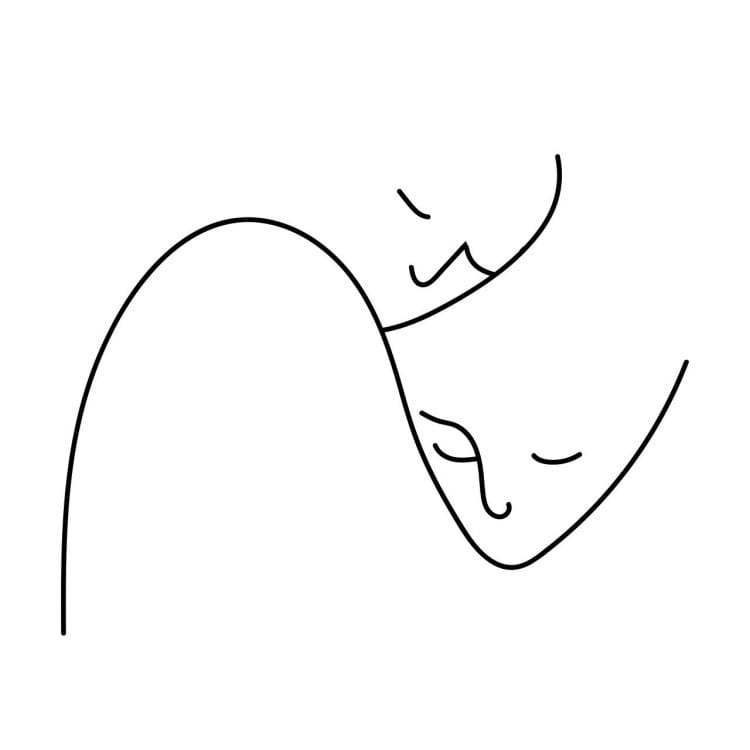Lines start stories that unfold as you step into experiences. As you put one foot in front of the other, as you hold a pen, a paintbrush, a stick in the sand, a thread of thoughts that stitch an idea to another, a movement or a drift of silence that composes a melody.
Lines open new chapters that start with leaving. We just carry the essentials and dip into a new narrative that starts with the touch of the line on a surface. Leaving a thought drop from our imagination, designing dots that are the steppingstone of the journey.
Words start their journey by leaving our mind and are led by our hands that hold experiences and feeling in the grip of life. Right hand, left hand, backhand, shorthand or keyboard as life taps its rhythm we take notes that move sensuously touching our very core. They are the keynotes, latchkeys, guides, translations, and openers. As continuous marks they lead, enthral, captivate, and coach us to move or to stand still. The stillness of meditation, the wonder of musings, the beauty of questioning. The movement of connection, the exploration of the unknown through our library of knowledge and understanding through questions that are like walking stick supporting our next steps.
Lines don’t have endpoints and are infinite. We hold onto a thread that becomes our line and then interweave it with another, once, twice and many times over. We capture and save these wonderful threaded lines in our mind, that as it is restless will find ways out and run along pages and pages creating books, albums, manuscripts, sketchbooks, and artwork. Narratives as blankets, pillows, scarves, clothes, ritual robes of our becoming.
Lines have many properties; parallel apart forever, intersecting joined at a point, coincidence lines that share many common points, transversal lines intersecting two or more lines. Paths, courses, routes, passages. They create ambages, practices, ceremonies, patterns, sounds, beats, orbits, and circuits. They are the supply chain of many cultures either written, drawn, sewn or imaginary. The footprints of our passage.
A painted line runs in the mind of the thinker and invites the seers to balance their feelings on it. One step at a time, one thought at a time, knit and thread the experience into a personal narrative. Visual lines welcome you to join them to start an imaginative journey that might resonate with you. Like a paintbrush that runs across an empty space of the mind nudged by the uniqueness of the artist and the observer
The written line expresses the person’s interaction with mark making. The continuous line shakes, flows, jumps and draws unique thought patterns. No two people have the exact same handwriting. Like fingerprints they only belong to us. According to The Pen Company (2022) there are 7 elements that influence writing they are: age, mood, time spent writing, instrument used, health and thought patterns.
We may design imaginative lines that thread, connect, weave, knit, stitch, paint, sing the wonders of knowing with not knowing, with questioning and finding answers.
According to Kristin Farr (Farr, 2022) lines in art can be thick, thin, horizontal, vertical, zigzag, diagonal, curly, curved, spiral, dotted. I would add jagged, intermittent, flowing, and squiggly. They are not just openers but construct the whole body of the narrative that slides, swims, jumps, and dances along the contours of the artwork. Here there are stories within stories. Narratives that welcome you to go beyond and visible. Hold imagination’s hand and be guided, it will know where to lead you.
Lines open stories as they unravel life’s chapters. They picture moments, events, reports, journeys, discoveries, imaginative wanderings, and celebrations. They become sentences, paragraphs, pages, movies, and canvases. Lines monitor our heartbeat as life breaths into us. They are the strings of our life’s melody.
The lines we compose are infinite. We carry them around in our minds, on our shoulders and across time in the hope to leave a mark of our presence and contribution in celebrating the wonders of who we are.
As teachers/educators/facilitators/academics/parents/friends/people we may design imaginative lines that thread, connect, weave, knit, stitch, paint, sing the wonders of knowing with not knowing, with questioning and finding answers. Lines sew curiosity and creativity with one another creating bonds of knowledge and bundles of joy at knowing we are not alone.
May we inspire our students to find their lines. Unique, beautiful and vibrant.
References
The Pen Company Blog. 2022. What are the 12 characteristics of handwriting? – The Pen Company Blog. [online] Available at: https://www.thepencompany.com/blog/handwriting/what-are-the-12-characteristics-of-handwriting/ [Accessed 23 February 2022].
Farr, K., 2022. Analyzing the Elements of Art | Five Ways to Think About Line. [online] The Learning Network. Available at: https://learning.blogs.nytimes.com/2015/12/02/analyzing-the-elements-of-art-five-ways-to-think-about-line/ [Accessed 23 February 2022].



